Turkey Vulture (Cathartes aura)
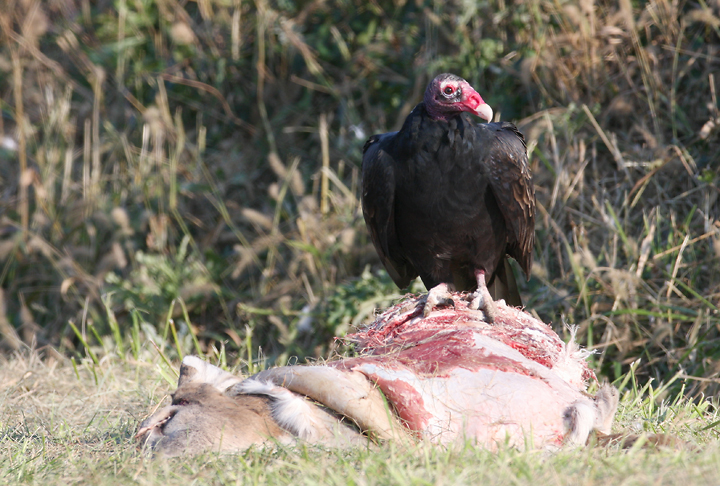
Above and below: Nature's recycling team hard at work - a Turkey Vulture in Talbot Co., Maryland (11/4/2007).
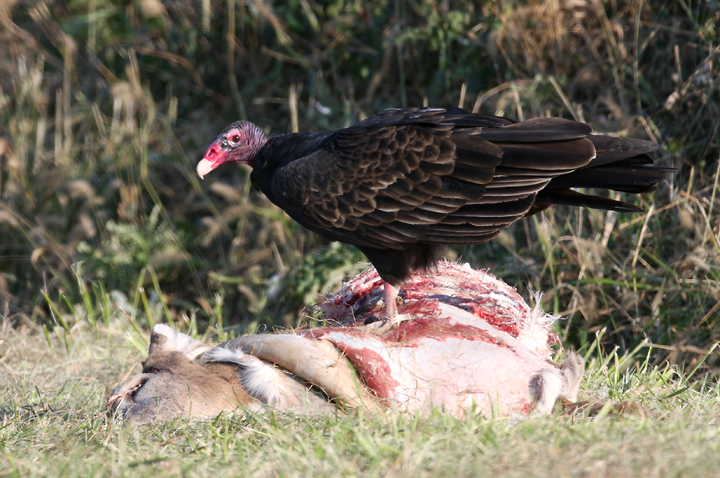
Below three: Turkey Vultures feasting on a deer carcass in Caroline Co., Maryland (2/25/2007).
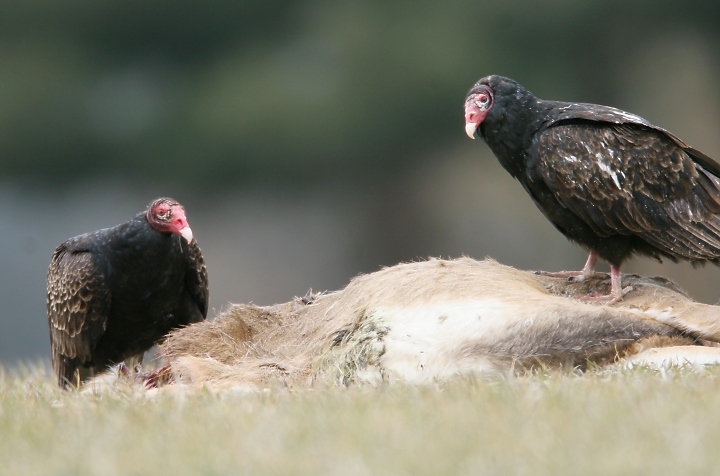
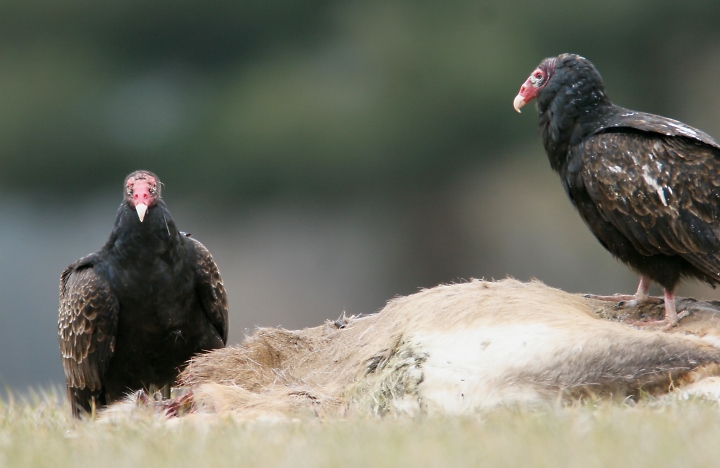
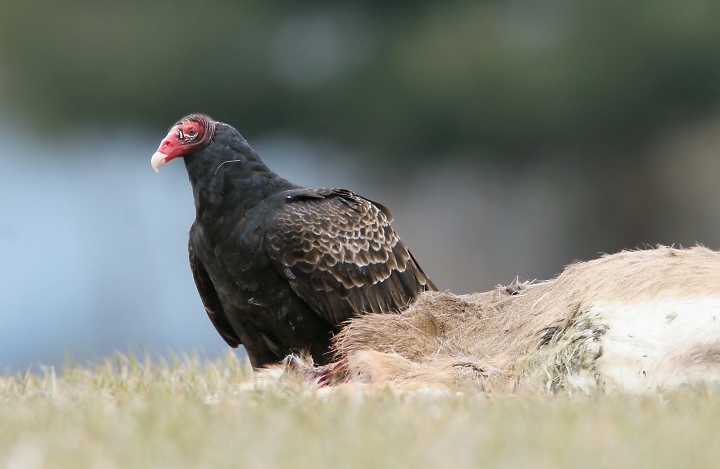
In flight
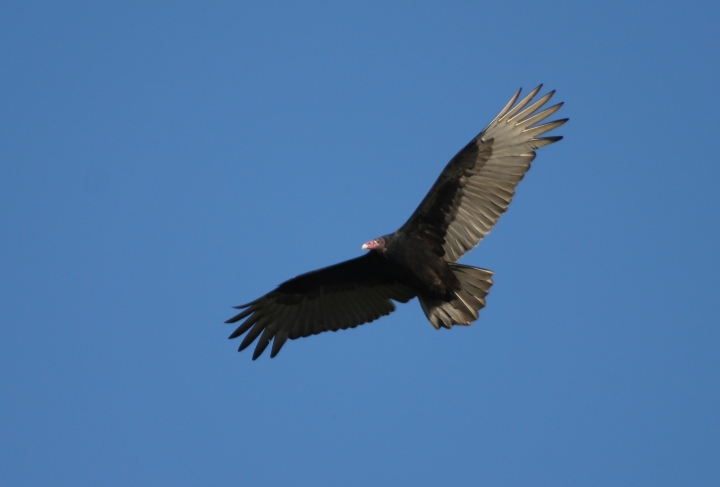
Below: Turkey Vultures warm their wings on a cold morning at Bombay Hook NWR, Delaware (3/2/2008). Note that these birds are molting their primaries (and primary coverts), their outermost flight feathers. The ten primaries are numbered from the innermost to the outermost, from P1 on the inside to P10 on the outside. (I usually find it easier to count backward from the outside in.) This is also the order in which the feathers are replaced during molt. The fresh, darker feathers have just come in, while the worn lighter feathers are yet to be replaced. The center vulture has molted P1 to P3. Not only is molt an interesting part of birds' lives, but it can also be critical in identifying rarities.
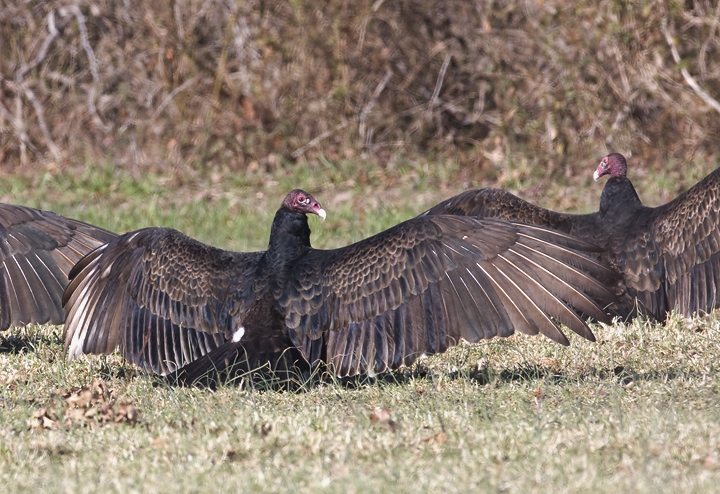
Below: A Turkey Vulture over Eastern Neck NWR, Maryland (11/22/2009).
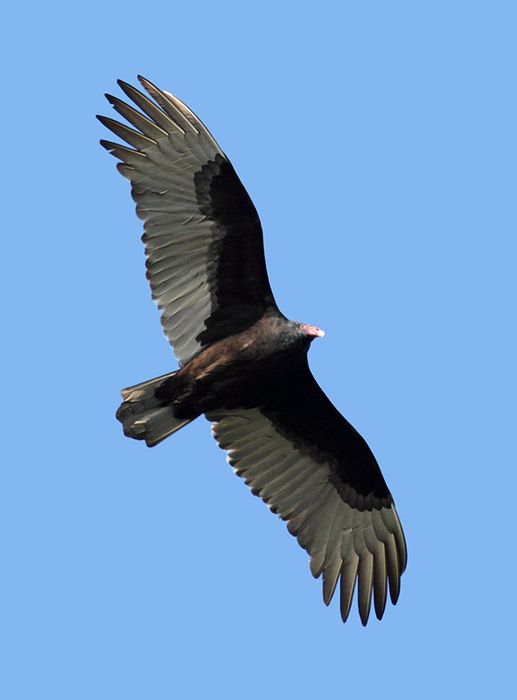
Below: A Turkey Vulture rests in the midday heat south of Killeen, Texas (7/31/2007).
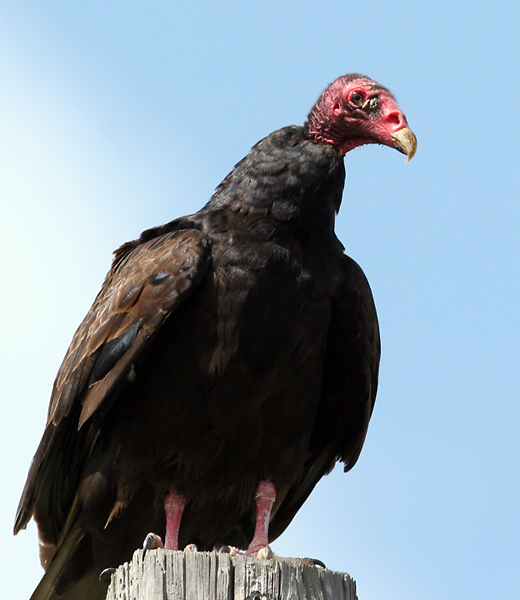
Below: A partially leucistic Turkey Vulture in Charles Co., Maryland (1/26/2008).
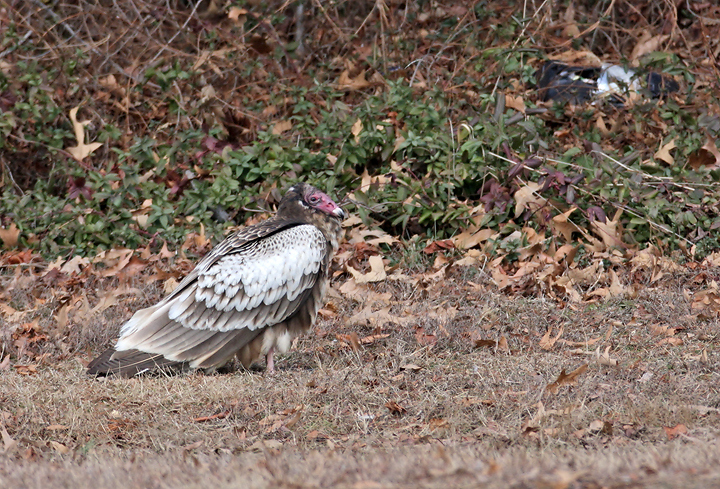
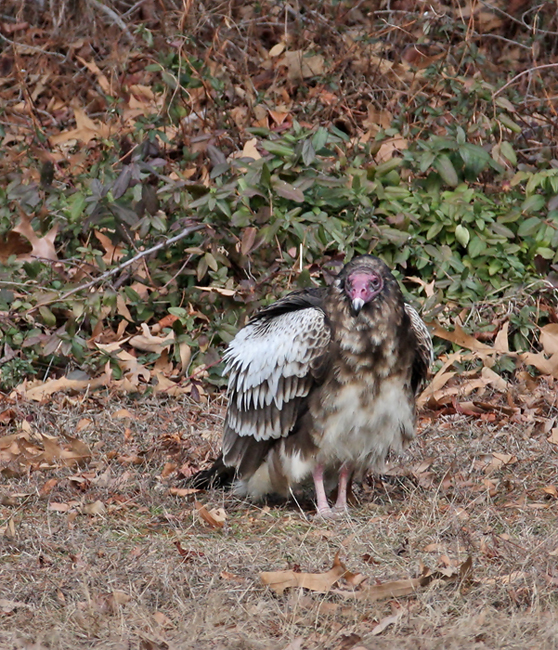
Below: A Turkey Vulture in Worcester Co., Maryland (10/14/2007).
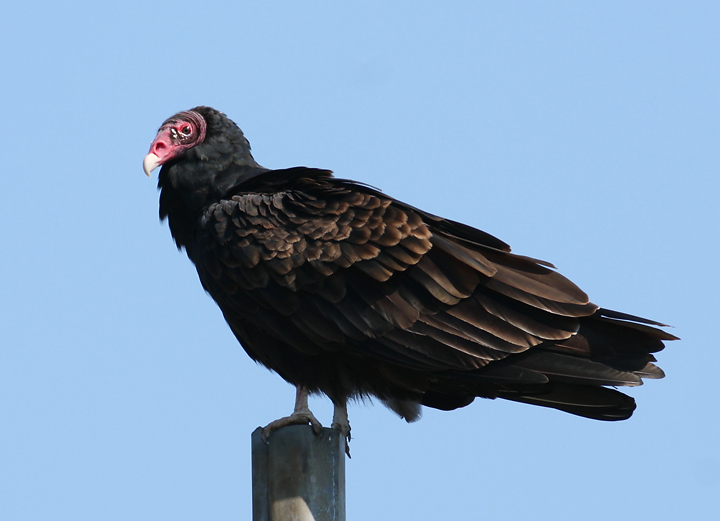
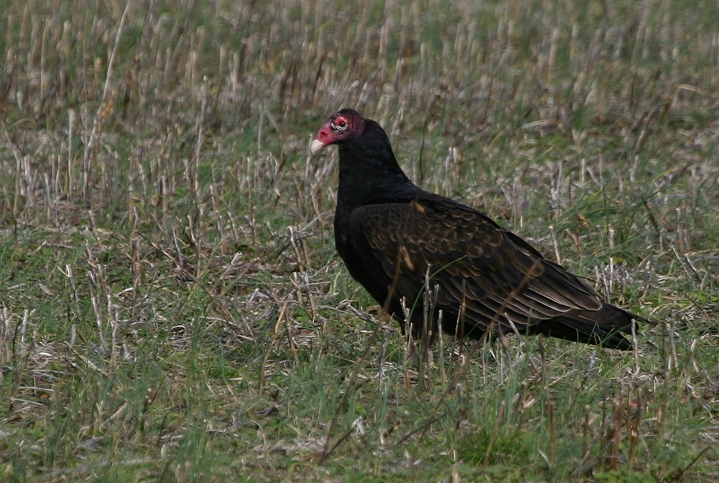
Comments: The Turkey Vulture is often seen soaring just above the trees in search of carrion, sometimes in large circling groups. In flight, it holds its wings in a slight dihedral (V-shape) and rocks slightly from side to side. Seen from below, the front of the wings are dark, and the flight feathers are gray. It has a hairless red head and hooked white bill, both specially evolved for its diet of mostly carrion. It hunts for its prey by sight and smell, while the only other eastern vulture, the more aggressive Black Vulture, hunts by vision alone. The Black Vulture is completely black above, including its head. In flight, it has a much shorter tail, white outer primaries, and flaps its wings more than the Turkey Vulture. Both often roost communally at night. Turkey Vultures migrate, but are found throughout most of the Mid-Atlantic year-round.
